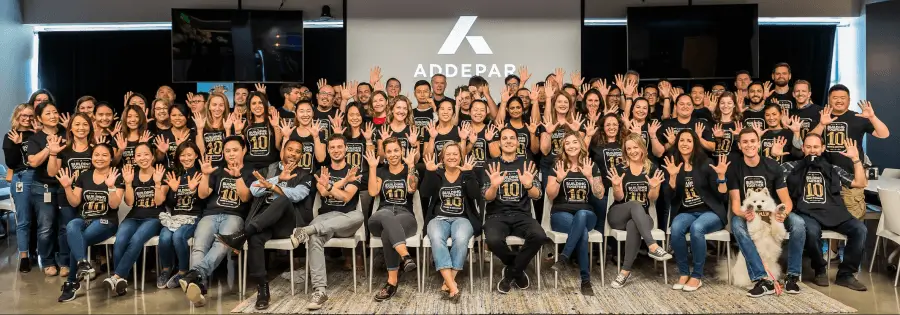7 Tips for writing the perfect follow-up sales email (according to science)
August 24, 2021
This article is part of the Gong Labs series, where I publish findings from our data research team. We analyze sales conversations and deals using AI, then share the results to help you win more deals. Subscribe here and follow me to read upcoming research.
Three days ago, I sent a flawless cold prospecting email.
It was personalized, to-the-point, and had a highly effective CTA.
I knew I’d get a reply.
But… none came.
Just crickets.
Now I’m staring at my laptop screen wondering what to send next…
Should I send another hyper-personalized email? (Those take a long time to write.)
Or maybe just a quick “bubbling this up” email. (But is that too lazy?)
No idea.
After an eternity of going back and forth, I decide to go with a quick, “Hey Meg – Did you see my previous email?”
But, is that REALLY the right move?
That’s why the Gong data team analyzed 304,174 emails to learn which prospecting follow-up email leads to more booked meetings.
Get ready to update your cadences.
And book A LOT more meetings.
Sidebar: What Is Gong Labs?
Before we dive into some next-level number crunching, here’s a quick explanation of how we get our data at Gong Labs.
We analyze sales interactions from our product users (anonymized of course). That includes everything captured by Gong’s Revenue Intelligence platform from web conference meetings, phone calls, and emails. Then we analyze how seller and buyer behavior impacts success rates.
For this report we analyzed 304,174 emails — specifically, follow-up prospecting emails — to learn two things: their ideal length and which phrases help/hurt success rates. We wanted the most effective formula for setting meetings.
Now that we’ve set the table, let’s eat – AKA book some meetings.
(PS: Want a list of money-making email templates? Snag the 11 Hyper-persuasive Sales Email Templates.)
The best length for follow-up prospecting emails
“To read or not to read, THAT is the question.” -Every prospect ever.
Attention spans aren’t getting longer and decision makers aren’t getting less busy.
So it’s easy to think “the shorter the better” when it comes to prospecting emails.
Turns out, that’s not true.
Longer emails are significantly more effective in booking a meeting:
How can this be?
There’s a fundamental difference between “short” and “concise.”
Short is about length. A short email is maybe 30 words or less.
Concise is about length and meaning.
It’s brief, yes. But more importantly, the message is valuable while still being tight, compact, and clear. You can have an email that runs to 150-words or more, that contains important information and that’s succinct and well-crafted.
Longer emails (30-150 words) work well if they’re packed with value. That means you include information that connects the prospect or their company to your offer.
You can afford a longer email if your email is personalized, direct, and intentional in every sentence.
Why “bubble-up emails” don’t work
“Bubble-up emails” are short, general, follow-up emails.
They point to the previous (usually customized and value-driven) email you recently sent, in the hopes of putting in minimal effort to get the maximum result (booking a meeting).
Example: Hey Devin, just bubbling this up. Did you see my previous email?
While this makes sense in theory, in practice, shorter emails are 15x LESS likely to help you book a meeting.
(Blew my mind too.)
The data suggests that you haven’t earned the right to be this lax.
Put another way, this approach creates a significant amount of work for your recipient.
This approach assumes your prospect (1) read and (2) remembers the value in your last email.
That’s unrealistic.
And it creates a lot of extra work for your prospect:
- Your prospect has to remember whether or not they read your last email.
- Then they have to decide Yes/No to going back and re-reading it.
- Then Yes/No to replying or taking action.
Whew. I’m tired just typing this.
And buyers make all these decisions in seconds.
As a result, it’s much easier to ignore the bubble-up email or say “no thanks” than it is to do all that work for a stranger when no immediate value is present.
Your buyers have meetings, priorities, projects, budgets, families, and hobbies. So even if they read your email and chose not to reply the first time, you’ve given them no reason to reply with that second touchpoint.
As Eilon, Gong’s CTO told me, “All it does is remind me that I already decided not to respond. Delete.”
Want proven email techniques before you write your next email? Join the 8,344 sales pros using the 7 Laws of Highly Effective Sales Emails to add meetings to their calendar faster than you can say, “Does 4 pm work for you?”
Avoid these phrases in your follow-up emails
Winning — and keeping — a prospect’s attention is paramount to setting up meetings over email.
But today’s common practices aren’t necessarily best practices.
We dug into common sales phrases to see how they help (or hurt) your chances of booking meetings.
Beware if you or your team uses them in sales outreach.
1. Thoughts?
This is a seemingly engaging (but sneaky) way of asking for a reply.
It plays on people’s need to be heard; their desire to be asked their opinion.
But when it’s used to get a reply from a prospect who’s hard to get a hold of, it’s just a gimmick.
And it turns out prospects can’t be fooled into engaging with sales people.
That’s why this is another phrase that helps reply rates, but decreases your chances of booking a meeting by 20%:
What do you think about that?
2. Never heard back
Never say never (heard back).
This phrase increases reply rates, BUT it decreases meetings booked by 14%.
That means sellers get a reply, but not the one they’re hoping for.
When sellers tell prospects, “I never heard back from you,” it triggers one of two responses:
- It incites guilt, which isn’t an emotion you want to stir up in prospects you’re hoping to win over. I get that you’ve spent time and effort researching, emailing, and calling them, and you have nothing to show for it (yet). But buyers aren’t are interested in their own results vs your effort.
- It confirms their previous decision not to reply to you. This approach will continue that pattern OR prompt them to brush you off with a quick “no thanks.”
3. Following up
It’s a follow-up email, so I should tell them I’m following up, right?
Sellers unconsciously include this phrase as a nod to their invested efforts.
It’s a not-so-subtle way of saying “It’s me again…”
Seems harmless, right? Not quite.
This phrase increases response rates, but decreases your odds of booking a meeting by 5%:
Why?
Because it’s empty. It does nothing to engage the buyer, it simply points out that you haven’t gotten the attention you wanted.
Swap “Following up on my previous note” with something that builds credibility — like research on their company or industry trends they might not know.
Remember, the first line of your email shows up in the email preview.
It’s like a second subject line that can entice prospects to open your email.
Don’t just leave it to hope that they’ll take a second chance on you. Make an offer. Say something substantial.
Speaking of hope…
4. Hope all is well
I’ve been pretty clear about this phrase in the past — I hate it.
I see it as wasted real estate. Just tell me why you’re emailing me.
But that’s why we look at the data: because opinions don’t always align with reality.
And although I’m cringing while I type this, “Hope all is well” actually increases reply rates AND it boosts meetings booked by an impressive 24%:
If you’re going to keep using (or consider adding) this phrase in your emails, make it less generic.
“Devin, I hope all is well since Gong made the Forbes Cloud 100 list, though I imagine things are pretty busy over there!”
That small addition does two things:
- It implies familiarity, even if you don’t actually know each other, and the fact that you’re paying attention goes a long way in quickly building trust. (And it’s slightly less cringe-worthy, IMO.)
- It passes the “email Turing test” because it’s too personal and too relevant to be an automated sequence.
5. Just called
It’s common practice to mention that you called or left a voice message.
Because if you point to the effort you’re putting in to get a conversation started, that’ll help your odds, right?
Not so much.
In fact it does nothing for your meetings booked. No increase or decrease.
That’s the definition of “meh”.
Spoiler alert: Buyers don’t care how much effort you’ve put in.
They care about themselves. It’s nothing personal, we all operate from a place of self-interest.
So instead of saying what you’ve done (e.g., called a dozen times), focus on what they’ll get from a meeting. (You know, value.)
BONUS: Put your best foot forward early
… Cause it’s only gonna get worse from there.
The reality is that response rates simply don’t increase after the first interaction. They decline steadily with every subsequent point of contact:
Yes, effort counts for something after that first email. So does creativity, because you’ll need to work even harder to impress a tough client and stand out after their first refusal.
But remember, the returns diminish with every next move you make.
So front load your outreach with your best messaging and creativity.
Book WAY more meetings with these email templates
We just covered a lot of what NOT to do.
And if you’ve read this far, you believe in adding the power of science to your sales approach.
Since building pipeline today is more important (and harder) than ever, why not give yourself the upper hand?
I’ll look the other way while you steal these 11 Hyper-persuasive Sales Email Templates.
You’ll get a how-to for every kind of sales email, from prospecting to proposal, and everything in between.
Take ‘em. It’s as easy as copy/paste/win.
Download your 11 Hyper-persuasive Sales Email Templates for free here.















